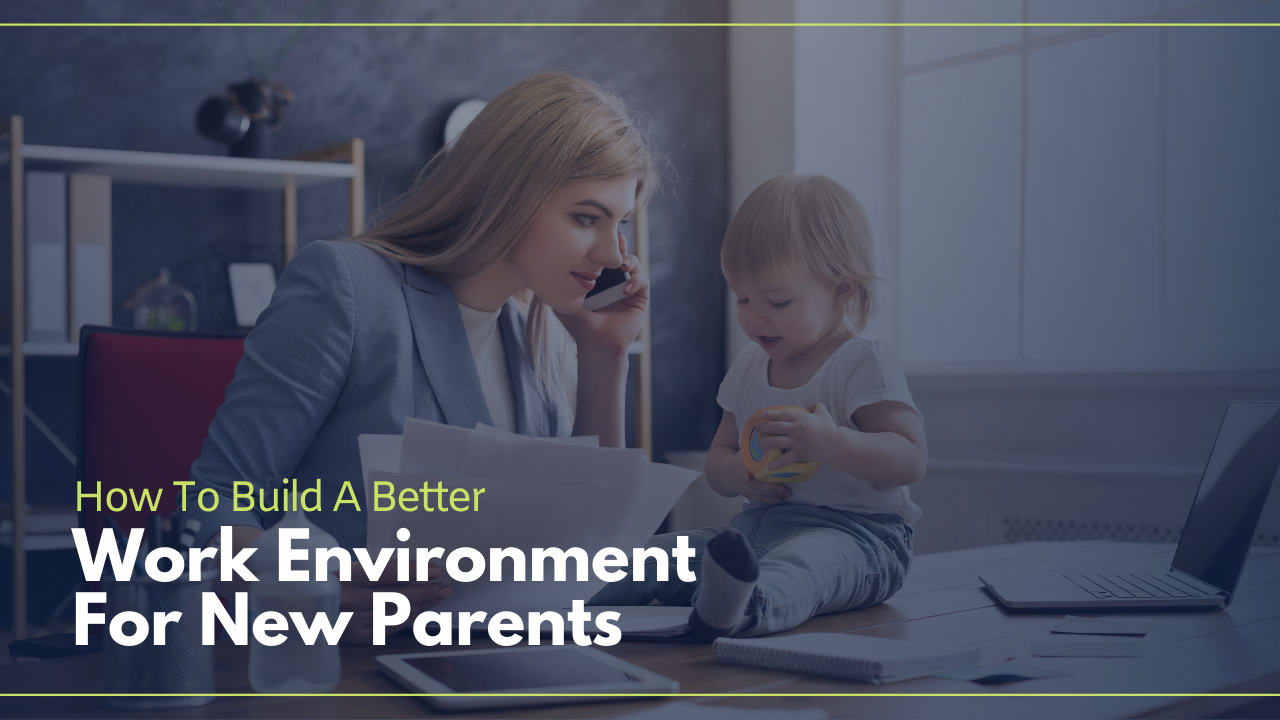- Many companies lack parent-friendly policies, which makes returning to work difficult and inconvenient.
- This often results in losing valuable employees, which is a challenge for small businesses given the competitive job market.
- Here’s how to introduce change within your company to create a more inclusive environment for working parents.
This article was written by Holly Welles, a real estate writer for The Estate Update.
While raising a child shouldn’t cost anyone their career, it often does. Many companies lack parent-friendly policies, which makes returning to work inconvenient at best and near-impossible at worst. Losing valuable employees is the last thing any business owner wants, especially with the competitiveness of the current job market.
What steps have you taken to boost your employee retention rate, and what more can you do to support new parents? Introducing change within your company relies on you listening to the concerns, wants and needs of workers with kids. Their perspectives can transform how you develop office policies.
1. Parental Leave
Paid parental leave is a hot-button issue in the United States. The U.S. is the only country out of a sample of 41 without a mandate for it. Many nations offer at least two months of leave, while Estonia gives an even lengthier year-and-a-half break.
Juggling a job can be difficult with balancing an infant’s unpredictable schedule. Parents often feel they don’t have enough time to adjust to parenthood before heading back to work. A lack of time at home can put a strain on a new parent’s relationship with their child, partner or even boss.
If you want to retain your workers throughout their momentous adjustment to parenthood, you’ll need to implement sufficient policies. For example, Netflix offers a full year of parental leave for part- and full-timers, while Deloitte provides time off as well as parenting programs. Take a cue from Deloitte — your support will be more effective if it’s comprehensive.
2. Daycare and Play Areas
Of course, parenthood doesn’t end after parental leave. Flexibility is of huge importance to working parents. One way to make sure experienced workers feel comfortable returning to the workplace is to offer play spaces or even full programs for childcare. Child-friendly areas are a lifesaver on days when new parents need to stay with their children.
How can you make your building safe and fun for young kids? There are always a few points to consider when creating a play space, such as age-appropriate equipment and safety checks. Child-friendly areas, whether indoors or out, should have a set perimeter fence, minimal sharp edges and a variety of play setups to engage children.
Some companies establish in-office daycare to remove the financial and scheduling burdens from parents. Individuals can relax knowing their kids are nearby with a trusted caretaker. Depending on the scale of your workplace and your finances, you can offer this service for free or a subsidized fee.
3. Changing and Nursing Rooms
Research indicates that 43% of new moms end up dropping out of the workforce. One quick win to support their transition is to help them take care of basic needs at work.
Consider creating a designated, private room for pumping breastmilk and nursing. With the necessary equipment and a peaceful setting, this option can be incredibly convenient for new moms.
Mothers can feed their babies in quiet and solitude, and they can use medical-grade pumps to store milk for later use. Changing tables should be accessible in this room as well as in any bathrooms within the building, including men’s restrooms.
4. Flexible Scheduling
Sometimes kids get sick or schools close for snow days. Maybe the baby won’t fall asleep, and the parents get all of two hours of shut-eye before work. Sticking to a schedule in these instances can be a challenge, which puts pressure on employees to arrive on time or risk their job. No one wants the threat of job loss hanging over them when they’ve got a new mouth to feed.
Flexible scheduling can increase parental comfort by giving them more freedom over how and where they work. You could allow employees to choose when they clock in or out, or you could offer remote opportunities. Work-from-home assignments can keep many of your best workers at your company once they have kids. Flextime and job sharing are also feasible ideas.
The key to flexible scheduling relies on fairness. Avoid handing all the big tasks to your employees without children. Managers often assume people without kids have endless time to take on extra work — but they have personal affairs, too. Extending your policies to everyone ensures every worker can enjoy the benefits of better hours.
Supporting New Parents at Work
Developing an accepting environment for employees with children can improve workplace satisfaction. People who receive tangible support from their jobs are more likely to be loyal to their employers.
After all, after giving you at least 40 hours a week, most people want to feel appreciated in exchange for that time. When your workers are happy, productivity soars and your business reaps the benefits.
About the Author
Holly Welles is a real estate writer with a focus on millennial experiences at home and at work. You can find more of her research on workforce trends on her own blog, The Estate Update, where she researches the best places to live and work.


 Dr. Gleb Tsipursky – The Office Whisperer
Dr. Gleb Tsipursky – The Office Whisperer Nirit Cohen – WorkFutures
Nirit Cohen – WorkFutures Angela Howard – Culture Expert
Angela Howard – Culture Expert Drew Jones – Design & Innovation
Drew Jones – Design & Innovation Jonathan Price – CRE & Flex Expert
Jonathan Price – CRE & Flex Expert














